The morning’s silence was broken by unrelenting squeaks, penetrating the wooden walls of our cabin. It sounded like hundreds of rats, or birds, I was not sure. I got up from my bed, took my camera and went to the deck upstairs. The sound became louder and clearer, coming from the direction of where the Flying Fox Island was.
But the island was empty last night, I thought.
With my zoom lens I inspected the source of the commotion over the mangroves on the island. Large black animals with shades of brown – around the same size of an adult cat – hanging upside down from the higher branches of the trees. Apparently the flying foxes had returned to the island while we were sleeping the night before.
Moments after the sun rose from the east, our boat began moving towards Rinca’s sister after which the notorious dragons were named: Komodo Island. Crisp wind and clear skies provided a promising and uplifting start to the day. Soon enough we arrived at Loh Liang, the main point of entrance to Komodo where big and small boats anchored, and hopped through nearby boats to reach the pier, much larger than the one at Rinca.
“This pier was built to accommodate the increasing number of cruise ships visiting the island. 14 of them each year,” Gonzales told us. However it appeared to me that the water was too shallow for any cruise ship to even come closer to the pier, let alone dock at it. But one thing for sure, the island’s popularity has soared in recent years, especially after it was elected as one of the New7Wonders of Nature in 2011. Hence the increasing number of international visitors.
As we walked down the pier to the island I noticed a thin layer of grey fine sand-like material covering some parts of the concrete wharf. “It’s the ash from Mount Sangeang,” Gonzales explained. The volcano erupted two weeks prior to our visit to Flores, forcing the temporary closure of the Komodo National Park and disrupting flights around north of Australia.
We were greeted by a young ranger holding a wooden stick with a Y-shaped end, compulsary for every ranger in the national park as a protective tool in case of an attack from a Komodo dragon. He was even shorter and skinnier than me, but he knew the island better than we did. Plus, we didn’t have any other options anyway.
He introduced himself and told us that he came from Labuan Bajo, like many rangers in the national park did.
“At this time of the year Komodo dragons are hard to find. It’s their mating season, so they tend to hide in the forests,” he explained. “But did you see any at Rinca?” he asked and seemed a little relieved when we said yes. “Some tourists, they complained for not being able to see the dragons,” he added.
We walked through dense shrubs and tall trees, a stark contrast to Rinca’s dry and sparsely vegetated landscape.
“The locals are used to seeing Komodo dragons chasing goats around their village. But when the goats managed to escape, that’s when they became worried because the hungry dragons would chase after them instead,” the ranger recounted and added, “In 2007 an eight-year-old child in a village on this island was killed by a Komodo dragon.”
After walking a few minutes we arrived at an open space surrounded by dead palm trees standing still with all the fronds had already fallen to the ground.
“This is where baby Komodo dragons hide and live to stay away from adult dragons, and even from their own parents. But up there they are an easy prey for the eagles. That’s why they dig holes in the soft dead palm trunks.”
We continued walking deeper into the forest with signs reminding visitors to stay in group scattered all along the trails. “You see over there… there is a megapode behind those trees,” he pointed out to a medium-sized bird walking on the forest floor.
“They dig holes in the ground and lay their eggs inside the holes. Then they cover them with soil,” he told us. “When the holes are no longer in use, the dragons use them to lay their own eggs. They usually dig up to seven holes nearby to trick other adult dragons and prevent them from eating their eggs. But sometimes the mother goes after her own babies after the eggs hatch.”
As we kept walking in the forest our guide occasionally spotted some exotic birds and plants, including a beautiful green imperial pigeon and plants from the genus Cycas, some of the oldest plants on the planet, hence the nickname ‘a living fossil’. But we hadn’t had any sighting on the dragons yet.
At an intersection we turned left and climbed a hill often frequented by Komodo dragons, especially in the afternoon to bathe in the sun, when suddenly our guide noticed a trail on the ground. “A dragon was here recently, this are the traces of its tail,” he claimed while moving his finger along the trail for us to see.
The hill was called Sulphurea Hill, after Cacatua sulphurea – yellow-crested cockatoo – an Australasian bird often spotted flying around the hill. As our guide was explaining about the bird, a flock of cockatoos was sighted at the far right of the hill, too far for my camera to capture. Meanwhile behind us Loh Liang was clearly visible with a number of boats berthing at the shallow waters.
After making sure there was no dragon in sight, we continued walking to our last hope for seeing the dragons on the island: the park ranger station. The forest was very quiet and appeared to be very peaceful, but we remained vigilant for there might be dragons lurking from the woods.
At the ranger station a little less than a dozen of deers roamed the beach, walking in pairs or alone. Food was clearly in abundance, but all the dragons were interested in was mating, leaving the deer grazing and frolicking in peace.
We ended up not seeing any single dragon on the island, although fortunately we did see some on the neighboring island of Rinca the day before. Soon enough we walked back to the pier, past a small souvenir market where we actually met some dragons, albeit made from wood. As we continued walking Gonzales then told us our next destination: Manta Point.
If you’re not a strong swimmer, you’d better not to swim at Manta Point. Those were the words Dino said to us while we were on our way to Labuan Bajo two days earlier.
It didn’t take long for me to understand why he said what he said as the currents became very strong and the waves were quite big as soon as we left the sheltered water around Komodo Island towards the open sea. Despite the rough water – which looked like Japanese painting for me – we were presented with a picturesque view of an endless turquoise ribbon on the horizon, bordering the cerulean sea with a barren island. But that also meant we were nearing Manta Point.
“Get ready quickly!” Gonzales said to both of us.
While I was changing into my swim shorts downstairs I was swayed back and forth and sidewards, thanks to the very choppy water. Then I started to feel what I least wanted to feel on a boat: severe seasickness. It happened so fast and at the click of a finger I felt the urgent need to vomit. But I had no time to pay attention to what my stomach was desperately telling me, and moments later I was already sitting on the prow, ready to jump into the water.
“Come on, jump into the water!” Gonzales sounded uneasy, probably because time was so precious in sighting a manta.
Then I jumped into the water, made a loud splash and soon I was completely submerged. Not only did Manta Point have strong currents, but it was also quite deep. The corals underneath all looked blue as the sun light couldn’t penetrate deep enough into the water to reveal their true colors. I tried to breathe normally through my snorkeling gear and not think of the rough water or the relatively deep sea. I let everything go and all of sudden I felt a sense of peace and tranquility. No upset stomach, no erratic kicking into the water like I did near Pink Beach the day before.
Nevertheless I glued my eyes on Gonzales, this time he left his swimfins on the boat. He scanned the sea floor carefully, then swam to another point and scanned the area again. He did that more in more than three different spots until suddenly he made a signal with his two fingers, pointing into the depths. I looked down to a point right beneath him and there it was. A manta ray was sighted.
Gliding elegantly above the sea floor, the medium-sized phantom of the ocean flapped its dark wings unhurriedly. James and I took a moment of silence, our eyes were fixated to the beautiful creature until it slowly disappeared in the darkness of the blue sea. Truly a sight to behold and a moment to remember.
This part of Indonesia is known for its rich marine biodiversity, thanks to the strong currents from the Pacific Ocean to the Indian Ocean, creating what scientifically known as the Indonesian Throughflow moving at 15 Sv or 15 million cubic meters per second carrying nutrients along with it, allowing sea corals, colorful fish and everything else to proliferate. The throughflow is so powerful that without it the world would have rotated faster, and we wouldn’t have had 24 hours a day as we do now.
We had seen how the throughflow blessed the waters near Pink Beach with the most beautiful underwater life, but that day after spotting our first ever manta we moved to another island just outside the national park: Kanawa Island.
Slowly the small island emerged from the horizon, the water looked much calmer and friendlier than at Manta Point. This time, free of an upset stomach, I was more than ready to spend a long time marveling at the underwater wonder of yet another tropical paradise in the west of Flores.
James and I then swam away from the boat to move closer to the beach, over a deep blue sea where nothing was visible beneath us, only darkness. A few minutes later we reached the shallow water, full of colorful coral reefs teeming with beautiful fish. Pufferfish, rainbow parrotfish, blue starfish and many other fish with vibrant colors and different sizes and shapes were playing around the coral reefs, undisturbed by our presence.
Closer to the beach, James was captivated by the plethora of horned sea stars – also affectionately called chocochip sea star – for their bright orange color with dark ‘chocochips’. “It’s a sign of a healthy sea,” he said.
While he was observing them closely, a white – almost silvery – fish with a sleek body and a black-tipped fin dashed in front of me like an arrow moving in the water. The fin was probably the most recognizable part of the fish and its family. A shark just swam before my eyes.
The blacktip shark, however, is not known for attacking humans, unlike its much bigger cousins: the great white, tiger and bull sharks. Meanwhile James spotted another fish which looked less harmful but actually caused more injuries to humans than the blacktip shark: a needlefish.
We could have spent the whole day just looking at those beautiful and sometimes otherworldly underwater creatures, but our boat crew needed to be back to Labuan Bajo in the afternoon, the place where we ended our overland trip on Flores and started the two-day boat excursion. It was truly a privilege and very humbling to be able to see those amazing and almost magical creatures up close, the ones that I had only seen on television and magazines before.
But any incredible journey has an end, and there was no better way to end our unforgettable trip than watching the sun slowly set over the hilly islets off the coast of Labuan Bajo. From the beautiful craftsmanship of the women at Sikka to the unique culture of Ngadanese villages, from the whimsical colored-lakes of Kelimutu to the vast rice terraces carved on the undulating hills of Manggarai, from the unique blue pebbles of Ende to the breathtaking natural wonders of the Komodo National Park, Flores was an island which not only satisfied our senses, but also provided us with experiences to treasure for a lifetime.

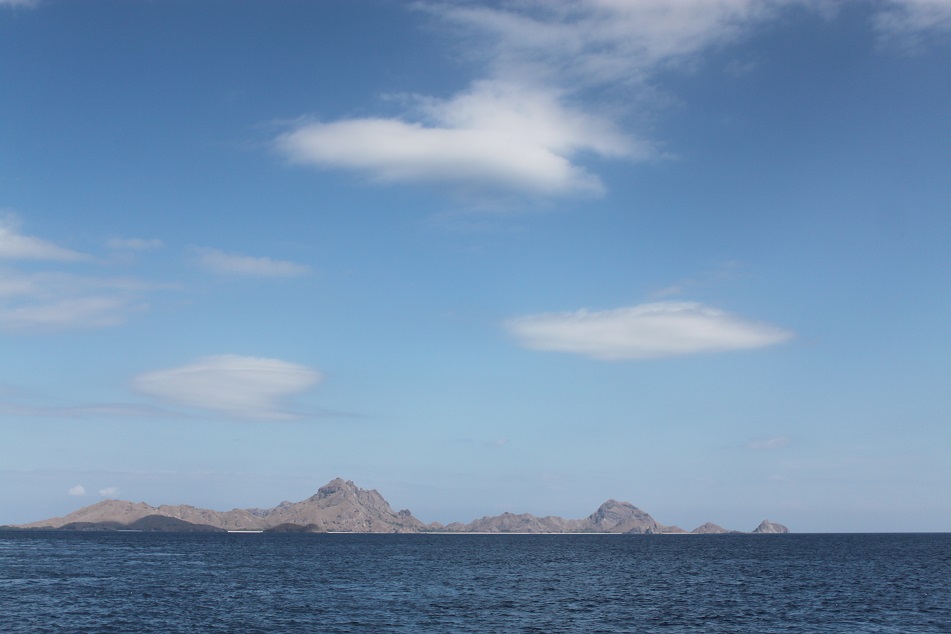


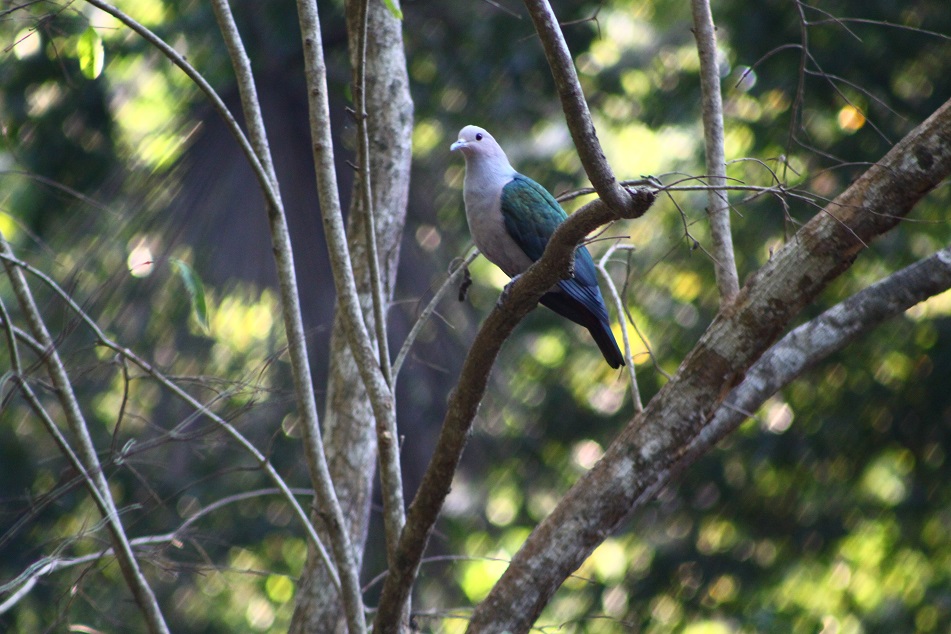
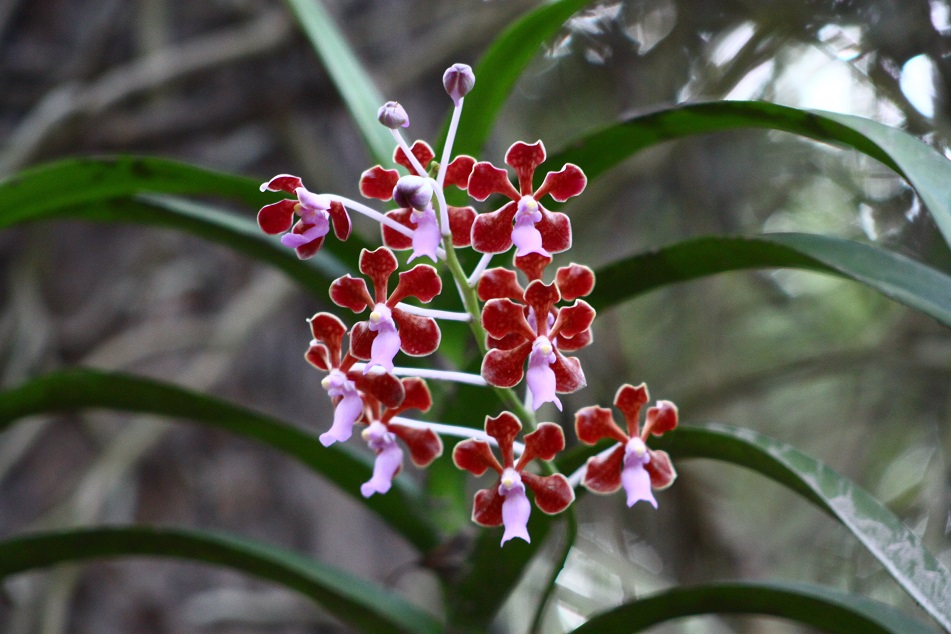

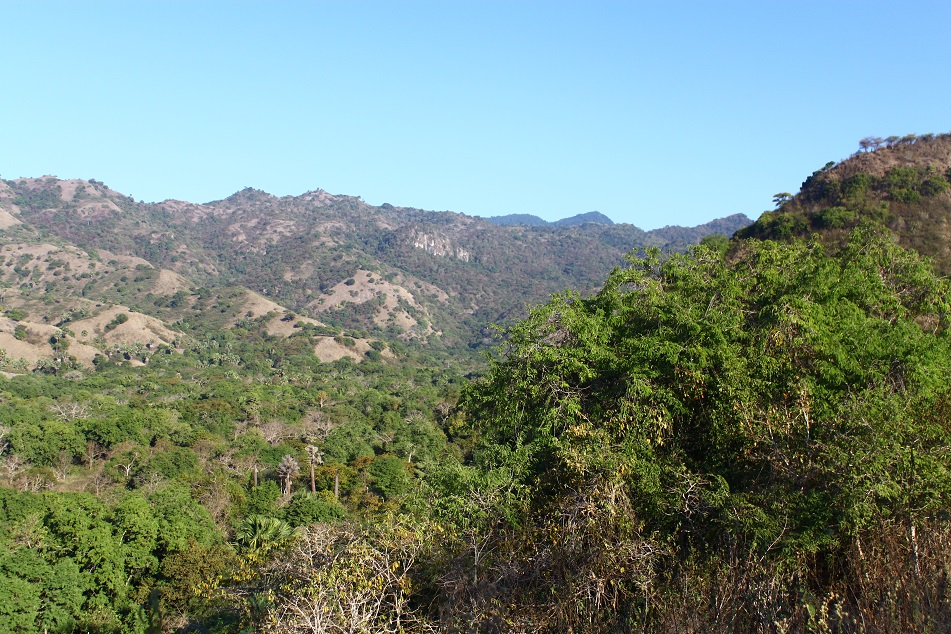
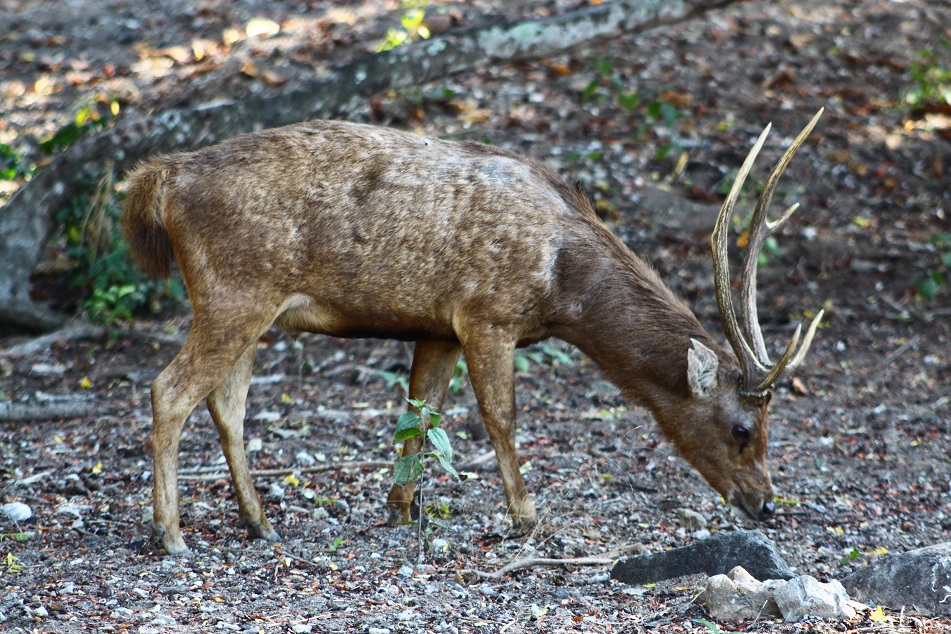
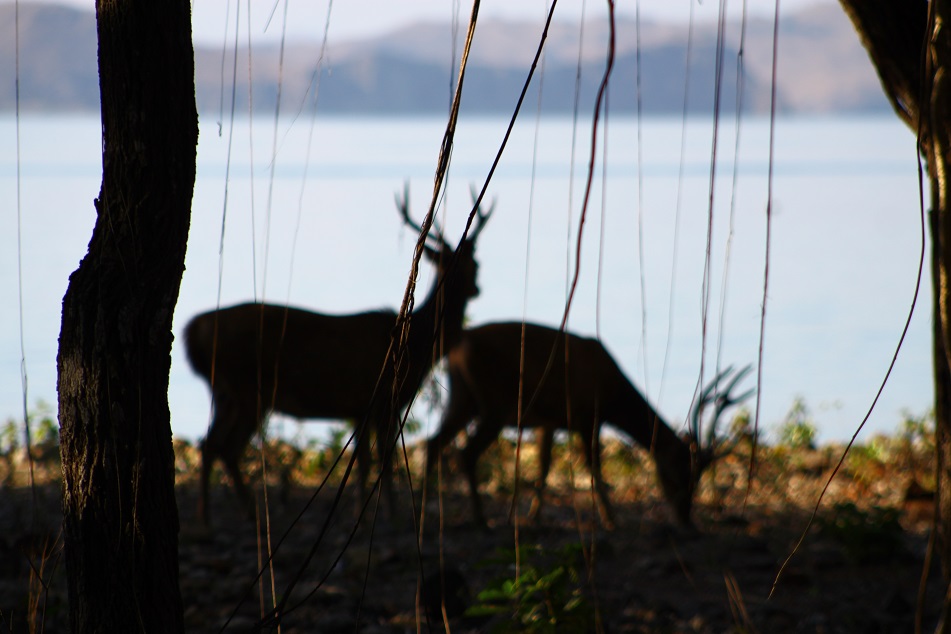
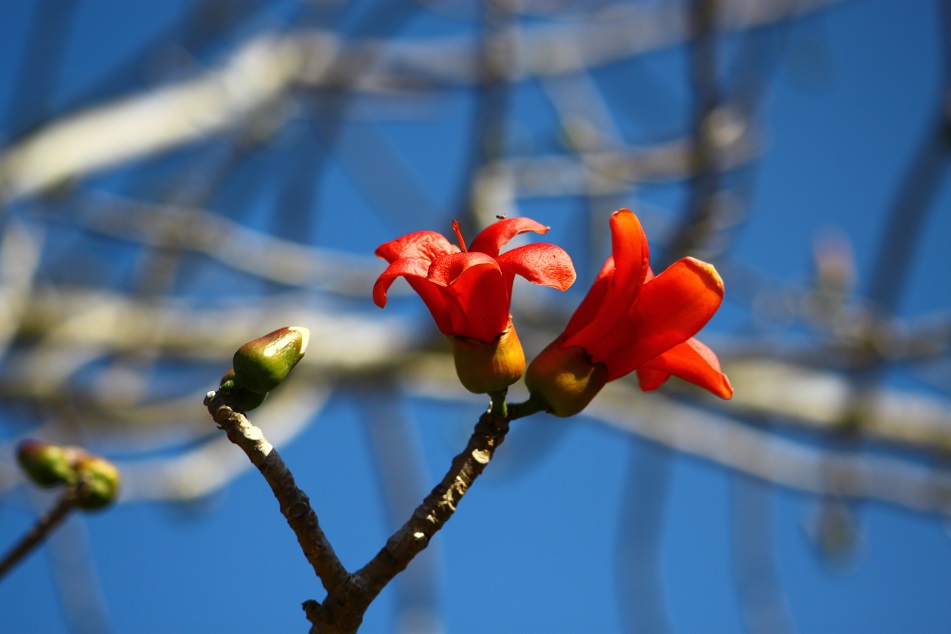
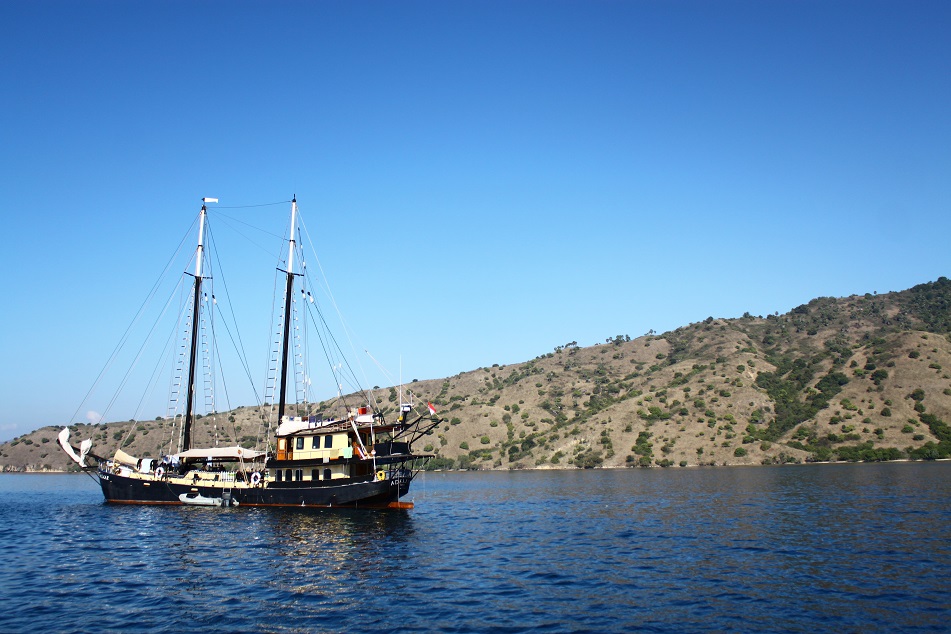
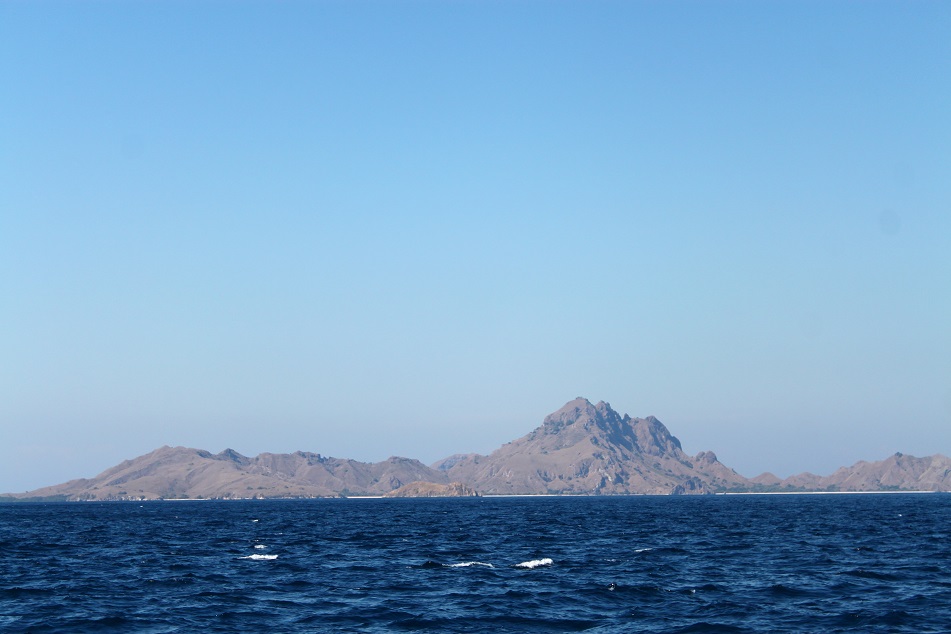
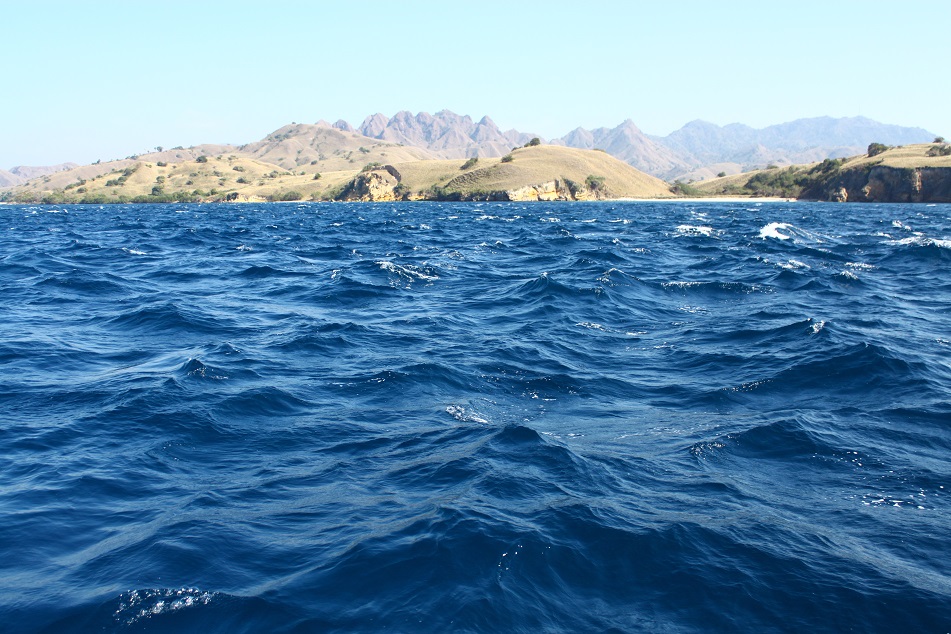
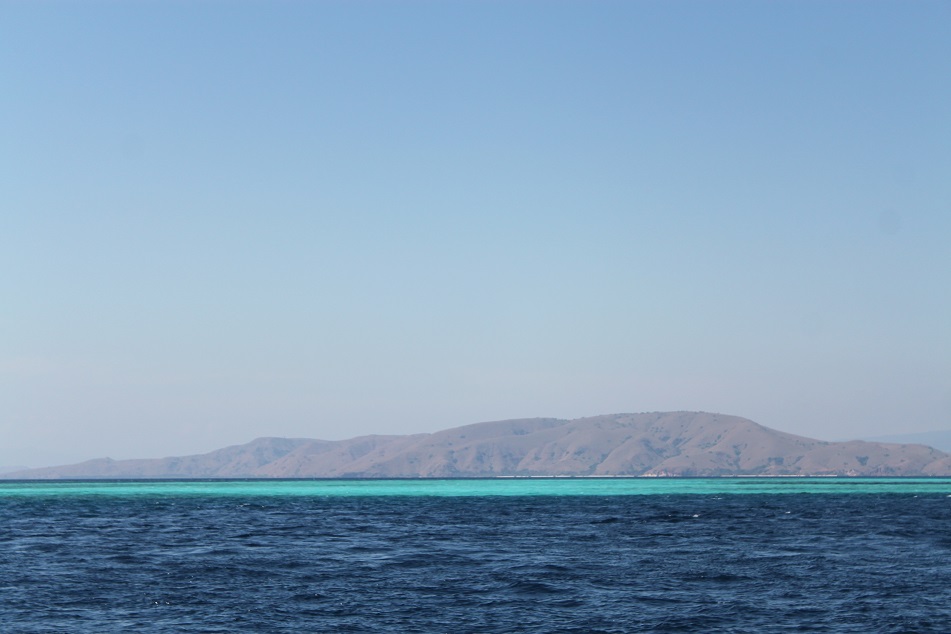

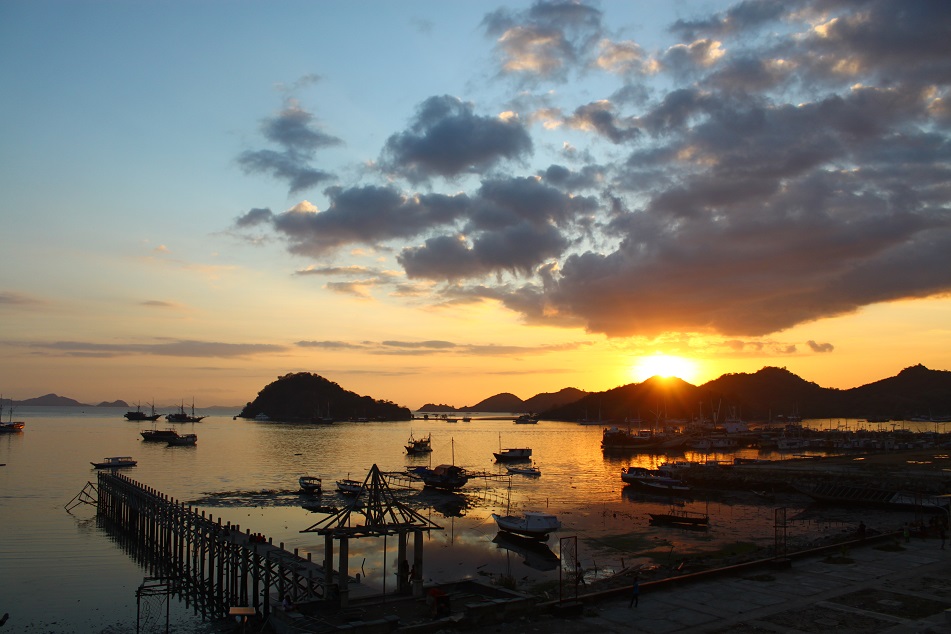
Reblogged this on mihran Kalaydjian and commented:
Komodo: A Magnificent Conclusion
LikeLike
I am sorry you didn’t see any dragons on Komodo, but I am happy that you didn’t get eaten so that we could enjoy your excellent post.
LikeLiked by 1 person
I didn’t know about the mating season until I came to Rinca, another island with a huge number of Komodo dragons. I was slightly disappointed I must say, but it was a nice thing to know that I didn’t see them because of a completely natural reason. Plus, I did see some adult dragons on Rinca, which were quite gracious, really. Thanks Jeff. Hopefully you’ll make it to this part of Indonesia when you come, and have a better luck sighting the dragons!
LikeLike
I think we will be there about the 1st week of November. Do you know if they will still be mating?
Surely they will be worn out from mating by that time.
LikeLike
Ha! 🙂 Yes, they will be worn out from mating by then. Mating season for Komodo dragons is usually between June – August, or that’s what the rangers said.
LikeLiked by 1 person
You are absolutely right, Bama – there was no better way to finish our overland trip across Flores. Had we swum out a bit farther from the beach on Kanawa Island, we might have seen more blacktip reef sharks! You took a lot of beautiful photos around Komodo; my favourites from this post are of the flora and fauna we encountered. 🙂
LikeLike
So we can say Dino is a good travel planner then. 🙂 The one that I saw was not too big, so I’m sure there were bigger sharks swimming around the island. We just didn’t realize it. Thank you James, our guide at Komodo provided a lot more information on the flora and fauna than the one at Rinca. I wish I was fast enough doing the translation for you, but sometimes there was just too much information to process.
LikeLike
Fantastic photography of flowers, sunsets and water. I love the rushing waters one. The color of the water is so beautiful. Nice post:-)
LikeLike
Thank you so much, Rosh. The water was the bluest of blue, we couldn’t have wished anything better than that.
LikeLiked by 1 person
I Imagined paradise like this! Many thanks for this great report.
LikeLike
Paradise is a fitting word to describe those islands. Thank you for reading, Martina.
LikeLike
Komodo island in my country…
LikeLike
We live in such a vast and beautiful country. 🙂
LikeLike
At my request my husband and I went to Khai Yai National Park in Thailand, in search of wild elephants. We saw lots of elephant dung and trampled jungle, but no animals. That trip remains one of the best in memory, perhaps because wild creatures should not be seen on demand. Your adventure sounds wonderful!
LikeLike
I couldn’t agree more with you, Jadi. Wild animals have their own rhythm of life, and to know that it hasn’t changed despite our presence not far from where they live is quite heartening. Sometimes when I least expected they just suddenly appeared, like what I experienced in Sri Lanka where I saw a big Asian elephant crossing a highway. My driver told me it was a common sight in that part of the country. Thanks for leaving your thoughts!
LikeLike
Oh no! I just had one day left at the island and when the tour guide suggested this, we decided to give it a miss:( you have no idea what I am feeling now as I go through your pictures.
LikeLike
Oh dear, that’s too bad Sonam. 😦 But hey, the islands will always be there, and everything that roam the islands will remain there for many years to come. So there will always be the next time for you. 🙂
LikeLike
It really sounds and looks like paradise…
LikeLike
Hi Moritz. It really was, and I was really lucky to have such nice weather during my two-day boat excursion.
LikeLiked by 1 person
Oh, I enjoy reading your post, and beautiful photos! Your post reminds me of my trip to Komodo. Manta Point was truly spectacular. I spent 70 minutes diving in Manta Point and diving with tens mantas..yes, the current in Komodo is very strong, not only in Manta Point but almost all over the archipelago. It could be intimidating but after seeing and diving with the mantas – for me it was amazing experience of a lifetime 🙂 I hope you feel the same too.
LikeLike
Thank you for your kind words, Indah. 🙂 Wow, spending 70 minutes at Manta Point and surrounded by those beautiful creatures must be really amazing! I only saw one, but even one manta managed to captivate me. Now I’m determined to learn how to dive as there are so many world-class diving spots across the archipelago which are too good to miss. But for now I’m happy enough reading your posts with beautiful photos from those places. 🙂
LikeLike
Stunning caption! 🙂
LikeLike
Well thank you! 🙂 I’m glad you enjoyed this post.
LikeLike
With your in-depth description and fascinating photos, Komodo is really out of this world! How much I would also like to see those emerald green hills and transparent blue sea in front of my own eyes!
LikeLike
Hi Bauhinia. Out of this world is another good description of Komodo. It was dry season when I went, hence the arid land. But if you wish to see a greener landscape you might want to consider going in rainy season. But of course, do expect some showers throughout the day. Thank you and hope you’ll go there sooner than later!
LikeLike
Unbelievable pictures. Thank you. 🙂
LikeLike
Thank you so much! That’s really kind of you.
LikeLike
Bama, Magnificent work here! Mihran sent me over from his site! I will explore your work. NIce job here! Phil from excuseusforliving.com
LikeLike
Hi Phil. Really appreciate your time here in my blog, and thanks to Mihran too. I’m glad you enjoyed this blog. Looking forward to having you back here. 🙂
LikeLike
awesome bgt
LikeLike
Taman Nasional Komodo benar-benar salah satu spot paling indah dan menarik di Indonesia yang pernah saya kunjungi. One day pengen snorkeling lagi di sana.
LikeLike
mau kesana must visit bgt
LikeLike
Wow – what a beautiful country and a beautiful experience! I also get terrible sea sickness and jumping ship was the only way I could alleviate it. Great story, and great photos!
LikeLike
Merci! For me I will always get seasick once I enter an enclosure on a boat. Otherwise, everything is fine. Thank you for dropping by! And I hope you’ll get to visit Indonesia soon. 🙂
LikeLiked by 1 person
Some of the snaps were overwhelming….thanks for the post !
LikeLike
Thank you, Deeptesh. It was such a beautiful place, indeed. Plus, the weather was really nice the day I went.
LikeLike
This sounds like an incredible trip for wildlife spotting. I would love to travel there one day!
LikeLike
Hi Rachel. For a person like you who loves being out in the nature, Komodo National Park is a perfect place to go. Since you’re living in London now so you have to fly to HK/Singapore/KL/Jakarta first, then continue to Bali before taking another flight to Labuan Bajo in Flores.
LikeLike
Hai Bama, nicely written as always. I am planning to go there with my kids, and really enjoy reading your post on Komodo!
LikeLike
Hi Kak Tesya. Thank you so much! That’s really kind of you. 🙂 Taking your kids to Komodo is a brilliant idea! I always believe that introducing children to different kinds of animals will encourage them to find out more about nature, and eventually inspire them to protect the planet. Enjoy your trip!
LikeLike
aah, aku mau ke sana nanti tanya2 kak Bama yaaa…..
LikeLike
Heihooo Kak Indri. Jangan cuma tanya kak, bayarin juga dong ongkos ke sana. #malak 🙂
Siap! Anytime butuh info just drop me a message.
LikeLike
Haseeekkk.. Eh, bayarin piye? Pohon duitku belum waktunya panen… :)))
Kak Bama jalan sendiri bukan ikut tur atau naik motor kan?? 😀
LikeLike
Nah, berarti kalo waktunya panen… asiik 🙂
Iya, saya gak ikut tur atau ngebolang naik motor kayak Om Tekno Bolang kok. 🙂 Saya di sana nyewa driver, soalnya bis umumnya jarang dan gak terlalu banyak. Sedangkan punya waktu di sana gak bisa dibilang lama juga.
LikeLike
Pas ke Pulau Komodo juga nggak nemu komodo satu biji pun, cuma dikasih tunjuk jejak pup dan ketemu baby komodo juga hehehe… Komodo di Pulau Komodo masih lebih liar dibanding di Pulau Rinca yang sudah terbiasa dengan jam makan dari ranger 🙂
Anyway naksir gambar bunganya, Bama… Cocok jadi wallpaper laptop nih hehe
LikeLike
Waktu itu bulan apa ke sana, Halim? Iya bener, kata ranger yang di Pulau Komodo juga gitu. Komodo yang di Rinca memang dikasih makan, sedangkan yang di Pulau Komodo dibiarkan hidup liar. Mungkin bagus juga jadi bahan penelitian efek campur tangan manusia dalam konservasi binatang liar, jadi bisa dibandingkan hasil di Pulau Komodo dengan di Pulau Rinca dan di masa depan jadi penentu pengambil keputusan, cara mana yang sebaiknya diambil.
Thank you, Halim. Monggo lho kalo mau dipake, atau mau file ukuran besarnya?
LikeLike
Kalau nggak salah mas ranger yang mengiring saya pernah bilang bahwa komodo di Pulau Komodo punya tubuh lebih besar dibanding Rinca, sayangnya nggak jelas perbedaan dipicu dari beda jenisnya atau pengaruh makanan di alam. Ehmm saya melipir ke Pulau Komodo dan sekitarnya bulan Juli 2009, udah lima tahun yang lalu ternyata 😀
Asyik… izin pakai gambar bunganya buat wallpaper ya.
LikeLike
Oh iya, saya juga dikasih tau informasi mengenai perbedaan ukuran komodo di kedua pulau. Wow, udah lama juga ya. Pasti waktu itu wisatawan dalam negeri masih sedikit jumlahnya, dan Labuan Bajo juga masih terasa kampungnya.
Monggo… 🙂
LikeLike
Hi Bama, it’s ironic that you didn’t see the Komodo dragons on the island named after them. but then it’s great that you got to see them in Rinca. Your snorkeling adventure sounds wonderful. I can wait to see the richness of Flores’s marine life myself. I enjoyed your series on Flores. It sad that it has come to its end.
LikeLike
Hi Marisol. The trip to Flores and some islands off the western coast of the island was one of the most memorable trips I’ve ever had so far. I would have been nice to see the dragons on Komodo Island, but its underwater wonder was enough reason to visit the national park. Another blogger who has been to some of the best diving spots in the world said that the marine life in Komodo National Park was truly world-class. Should you and Keith have a plan to visit Flores just let me know. 🙂
LikeLike
Beautiful photo-essay Bama. The opening paragraph, where the silence was broken by the squeaks of the timbers of the boat…brilliant, as is the photo series. But the best is reading how well you take to adventure, well done! Cheers 🙂
LikeLike
Thanks, Randall. That part of the journey was such a sensory overload, in a good way. So I tried my best to describe it in words. It’s a trip to remember, and it left me wanting for more. 🙂
LikeLike
That is the goal for any journey I have ~ if I finish wanting more, it is a runaway success. Reading it I gathered that same feeling ~ really well done.
LikeLike
And we are really lucky if most of our trips make us feel that way. Although sometimes it’s more about our perception on how we see things. Thanks again, Randall!
LikeLike
A spectacular conclusion to a fascinating series! I have enjoyed every one of your adventures across Flores Bama. Thank you for taking us along. Where are you and James off to next?
LikeLike
Thank you again for following the stories from my latest trip with James, Madhu. I really really can’t wait to go to India and explore the south! Both James and I are currently really busy so we don’t think we will go anywhere else this year. Early next year, though, we’re thinking of visiting East Java to see some ancient temples built before the arrival of the Europeans in the archipelago in the 15th century.
LikeLike
Great read and beautiful photos!
LikeLike
Thank you, Angela. I really appreciate it.
LikeLike
Great photos and such a live narration! Makes you want to visit the island! The chance of coming face-to-face with a Komodo dragon,though, doesn’t sound very appealing to me…
LikeLike
Thank you! I understand for some people the Komodo dragons are just too scary and dangerous. But visiting the island where they roam is really worth doing.
LikeLiked by 1 person
It was nice to visit to your blog! It was nicely written and pictures are superb! Which camera did you use? I wish to embark on such trip!
LikeLike
Thank you very much for your kind comment. I always use my Canon 500D every time I travel. Hopefully you’ll visit Indonesia soon. Best wishes!
LikeLike
I’ve always wanted to visit Komodo but I’m a tad concerned over the safety of the cruise ships/boats that head there! I’ve heard too many cases of shipwrecks amongst other misfortunes from other travelers.
LikeLike
I understand what you mean with the dodgy boats — too bad some famous bloggers happened to take one of those boats. However if you take local fisherman’s boat, or in my case a boat dedicated to visiting the Komodo National Park, safety shouldn’t be much of a concern.
LikeLike
I will be going to Bali next March and thought of visiting Komodo. Besides the direct flights from Bali to Flores, the tours to Rinca and Komodo are pretty pricey. I was wondering based on your experience, what are your recommendations for tour operator and where to stay.
LikeLike
Hi Edwin. You can take the flight to Labuan Bajo which is a city at the western end of Flores where you can arrange a trip to the Komodo National Park. The thing is when I went there I contacted a guy in Maumere at the other side of Flores because I took an overland trip across the island before going to Komodo and Rinca. But I believe there should be a lot of tour operators to choose from once you’ve arrived in Labuan Bajo.
LikeLike
Thanks. Looks like this is the best option.
LikeLike
You’re welcome. Have a great trip to Bali and Komodo!
LikeLike
Hi, Bama. Do you still remember the name of cruise/boat/yacht operator that operate that you mentioned in these article
when you’re there?
LikeLike
It was a small boat called KLM Fammasena. I booked it through a local guy.
LikeLike